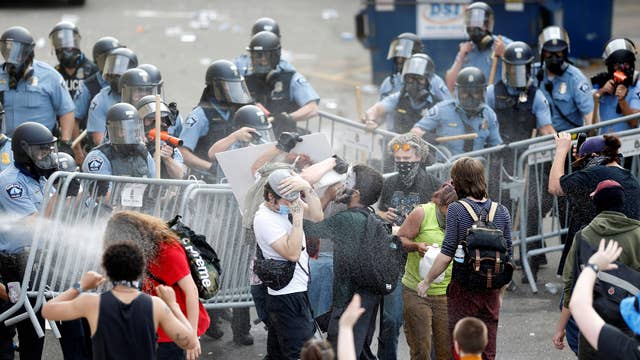

By Chief Joel F. Shults, Ed.D.
In their rush to claim credit for police reform, many states have banned the “choke hold” , tear gas on rioters, and “military” grade equipment. These measures are more likely to get more citizens hurt as well as police officers, because the equipment and techniques are valuable assets in maintaining law and order. The primary problem with many of these measures is that they are not based on knowledge of their use and the circumstances which resulted in their use.
Danger to the resisting subject
The public should know that active resistance is a very dangerous condition for a suspect, not just the officers involved. Conditions of drug influence and intense psychotic behavior can result in violent and unpredictable behavior that is a life-threatening condition. This requires immediate emergency medical intervention that can not be accomplished until the violent person is restrained.
In cases where in custody deaths have occurred, the vast majority have involved polydrug use in which the subject has been exposed to multiple attempts at restraint. These emergency conditions render the body unresponsive to pain, meaning that the officer cannot rely on techniques that cause pain and can be relaxed after compliance.
Officers are often called to these persons due to erratic behavior and disturbances. The person must be taken into custody for their own protection and emergency medical care, as well as for protection of the public. Persons in this condition are typically not rational, and are not amenable to being “talked down” with de-escalation techniques. They may have committed a series of minor offenses in the course of their behavior. Because of the ability to persons in this condition to have no feeling of pain or exhaustion, it can take a great deal of effort and as many officers as are available to get the person restrained. The headline will read that a minor offender was brutalized by police when, in fact, the restraint was a life-saving rescue.
Choke holds
Choking or strangling a person is deadly whether it is done by a police officer or a civilian. Choking and strangling, despite the media’s crediting some police arrest control techniques labeled choke holds or strangle holds, are not part of policing except in life and death struggles where deadly force is required to save a life.
Some legislation and rule making also refers generically to all neck restraints. What has been taught to police for many years as an effective way to cause a violently resisting subject to be momentarily rendered incapacitated is the type of maneuver that very deliberately protects the trachea and front of the neck and, instead, compresses blood flow to the brain causing momentary loss of consciousness. This is generally harmless and is intended for use on persons whose resistance would otherwise have to be met with other less lethal means, or even deadly force. Removing this technique from the array of tools an officer may use forces officers to use other techniques that may carry more risk to the offender and the officer.
Military Grade Weapons
The continued mythology that police departments are getting military assault vehicles is damaging agency’s ability to gain valuable rescue equipment. There are no tanks being given by the military to civilian policing. There are no police departments rolling through their towns with automatic weapons mounted to an assault vehicle.
What does exist are vehicles that are armored to resist gunfire. They are able to enter an active threat zone in order to place officers nearer to an attacker. They are also able to move into an active threat zone to rescue injured civilians or hostages. Most police cars are little defense to even small arms fire. In an active shooter situation, patrol cars are of little value to do the mission of an armored vehicle. Specialized vehicles can safety move in high water and areas otherwise devastated in natural disasters.
Some small police departments have been criticized for obtaining armored vehicles. If there is one thing we’ve learned about mass casualty attacks and natural disasters, it is that they can happen anywhere.
Law enforcement agencies are best served by vehicles made for civilian law enforcement. The cost of purchasing a specialized vehicle is prohibitive for many agencies. This is why military surplus vehicles, such as the MRAP, are often obtained at little cost. The MRAP is not ideal for civilian police work, but it has great utility and value when custom tactical vehicles are not a possibility.
Just a Sample
The elimination of just these two assets can leave vulnerable citizens at risk as well as the officers entrusted to protect and serve. Legislators and activists must learn that facts about policing before making rules that harm rather than help their public.